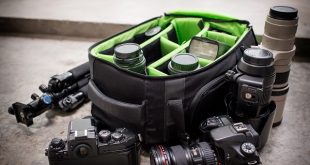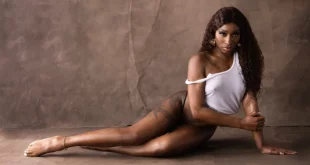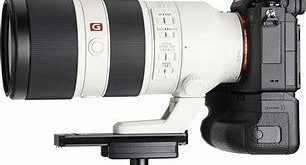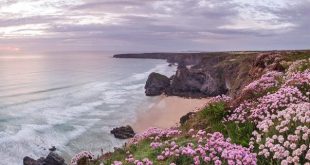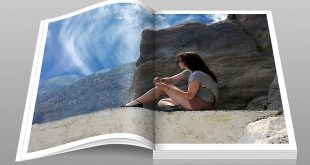In the 20th century, when the technique of photography improved enough, rather sensitive photographic materials and comfortable cameras appeared, photography turned from a technical curiosity into one of the types of visual art, akin to painting, but different from it. The special place and significance of photography in the scientific and artistic culture are associated with the technical, scientific essence of photography. The most important feature of the photo is its authenticity, authenticity of the captured events. At the same time, the image, as in a painting or drawing, bears an artistic generalization, the disclosure of the inner meaning of the situation shown, the character of the person depicted, and much more. In essence, the photographer is an artist with certain ‘colors’ – photography equipment and photographic materials.
A modern photographer (photo artist) uses visual means of photography (point of view, perspective, linear composition, plan, perspective, lighting – related to visual means of painting) to obtain the creative artistic effect of photography and photography. Depending on the type of photography, they are either done in a Philadelphia Photo Studio, outdoors, or events such as weddings. Additional tools of the photographer (photo artist) are chemical-physical processing and digital photo-processing of images.

Consider these types and genres of photography in more detail.
- Landscape
Landscape photography – a type of picture or photo depicting nature or any area, whether it be a forest, field, mountain, grove, city, etc. , meadows and mountains, that is, nature is natural.
The nature surrounding the person long since agitated him, admired with its beauty and greatness. In our time, hectic thoughts about a crisis in the relationship between man and nature, searching for ways of bringing civilization and the environment closer together, landscape art is often a wise teacher. The genre of fine art, reproducing natural or human-modified nature, is called a landscape. The landscape is also called the work of this genre.
Depending on nature, landscape motive, you can select a rural, urban, industrial landscape, sea. The landscape can also be historical, heroic, fantastic, lyrical, epic. The photographs embody changeable moods, states of anxiety, grief, premonition, the beauty of fields, meadows, peace, joy, etc.
- Nude photography
Nude photography is a type of photograph in which the final result depends on the correct interaction between the photographer and the model, how much the model can overcome its constraint, and the photographer to unfasten the model by communicating with it.
Nude (erotic photography) is a genre of fine art that revels in the image the idea of beauty, the value of earthly sensual being. This is a long-standing genre and object of photography, sometimes contradictory and controversial in its content. Due to the ability to exert a powerful emotional impact, it is still used by photographers, viewers, and people who want to have photos with their own images made in this style.
- Still life
Still, life is one of the genres of photography, in which various inanimate objects, products or goods become the object of shooting: art products, dishes, flowers, fruits, etc. Often, still, life is used to demonstrate certain household items or applied arts in an elegant form. Today this genre of photo art is often used in advertising photography.
Also means still life can be solved and more complex artistic problems. For example, with the help of still life, you can reveal the inner world of a person who is absent in the frame, to show the peculiarities of his life and character.
Photographs taken in the still-life genre delight poetic images, expressiveness of the transfer of texture, color and volume of objects, conciseness of compositional decisions, clarity of tonal and color drawing. Many photos taken in this genre are striking with the subtlety of compositional solutions and the brilliance of the photographer’s skill.
The still life on which small objects located on the table surface are photographed is also sometimes called a table photo. The very term ‘still life’ came into the photo from painting. This term was coined in France and in translation means dead nature. In England, this genre of fine art was called ‘still life ‘.
The main subjects portrayed by artists on still lifes were fruits, flowers or dead game. The photographers who worked at the dawn of photography, shortly after the camera appeared, used, as a rule, the same objects and usually took still lives on the premises, but sometimes made exceptions. The fact is that early photographic materials differed in poor photosensitivity, so some photographers preferred to photograph still lives in the front garden or garden. At the same time, they made up compositions from a variety of subjects: wheelbarrows, buckets, stairs, etc., which often appeared side by side with things brought from home, as well as fresh flowers and trees.
- Portrait
Portrait – the image of any person or group of people produced by means of painting, engraving or sculpture, also a photographic image or verbal description or other artistic means.
A portrait can be considered quite satisfactory when it reproduces the original inaccuracy, with all the features of its appearance and inner individual character, in its most usual pose, with the expression most characteristic of it.
The theme of the portrait is the individual life of a person, the individual form of his being. If the themes lose their independence, the portrait goes beyond its genre specificity. So, for example, if the subject is an event, we are not in a portrait, but in a picture, although its heroes can be portrayed. The borders of the portrait genre are very mobile, and often the portrait itself can be combined in one work with elements of other genres.
- Wedding photography

Wedding photography is a type of photography that combines different directions in photography. Despite the fact that the wedding album is a story about the wedding of people, wedding photos can be taken and processed in various styles.
Any photographer who has been working in this genre for a long time will say that wedding photography is one of the most complex and difficult work processes. If you are new to photography, you can learn about this fascinating activity by taking a wedding photography tutorial. It will be difficult for you to immediately make beautiful wedding photos, but with practice, comes experience. To get a good shot at the wedding, you need to watch and catch the moments.
Wedding photography combines two types of photo genre at once: reportage and staging.
Staged photos – the decoration of any wedding album, most often include classic romantic photos, in which newlyweds and guests pose for the photographer. But these are not only “frozen” poses and faces devoid of emotions; on the contrary, this is a whole story, a story about the wedding day, created by individual frames showing the vividness, beauty, naturalness of every moment.
In addition to the ability to shoot a report, the wedding photographer should also have the skills of portrait photography. Today one of the most common styles of wedding photography is also glamor.
- Lomography
Lomography is a type of photograph in which not every single frame has artistic value, but their total number, which can be depicted in anything. This is also from the hip, without aiming through the viewfinder, mainly with a simple automatic film camera.
- Report or Photo Report
The term photo report is derived from the French ‘inform’ or ‘notify’. The specificity of the photo essay is to capture interesting moments in time and in the ability to choose the most successful angle for shooting. The report, as a rule, eliminates the direction of the frame and interference with the natural course of events. The main feature of the reportage snapshot is its documentary. In other words, only fixing the event through the prism of the author’s perception is appropriate.
Relatively speaking, a photo report can be divided into two types.
The first one is event-related; it includes the shooting of significant events, such as international forums, theater premieres, international sports competitions, etc.
The second type is an everyday photo report reflecting life in its daily everyday manifestations.
- Documentary photography
Documentary photography is usually considered a form of professional photojournalism, but the amateur is also involved. The photographer tries to make an objective and impartial photograph that conveys the true look of what was shot, most often of people. Typically, these photos are intended for publication. However, when an organization or company orders a documentary survey of its activities, these photos usually go only to the archives of this company for internal use. Photographers of nationwide media usually try to shoot documentary shots, rather than staged photos, because they give the sense of truthfulness and genuineness needed for real news.
- Genre photography
A genre photograph is a type of photography where a certain plot, history, action is reflected. To obtain a genre photograph, it is possible to use all previous genres of photography, all production decisions, etc., in order to obtain a good genre photograph.
- Advertising Photography (Commercial Photography)
Advertising photography = is the peak of ownership of photo art. Advertising photography (Commercial Photography) includes almost all genres. This term describes images used in the following directions:
- advertising layouts, press advertisements
- outdoor advertising
- calendars
- corporate and representative products
- posters
- booklets, brochures
- directories
- packing goods
- design music and video
- clearance of online resources
Advertising photography with the presence of people is of a different type: it can be an advertisement for a product or service, an election poster, a poster for a concert, a performance or a movie. That is, a person can be both a user and directly the object of attracting attention. The person on the poster should be happy and perfect, always with a radiant smile, therefore it is necessary to retouch all the flaws that are particularly pronounced on the close-up and large-scale image.
- Reproduction
A reproduction is a type of photography where it is necessary to translate a certain material or spiritual object (in a material form) into a photographic image. The most important goal is to preserve the authenticity of the object, to transfer as accurately as possible information about it and its appearance. For example, when reproducing paintings, it is necessary to use a certain lighting technique so that the picture is lit evenly, all colors and shades are conveyed as accurately as possible. In addition, we must strive for such lighting, in which a work of art was created. For example, lighting from the window or by candlelight. It is necessary to understand the physics, lighting and exposure metering.
- Wildlife Photography (animal photography)

Wildlife Photography- is a genre of photography in which wild birds and animals are the subjects of photography. All animals must be wild, real photo hunters do not take pictures in an unnatural habitat.
- Macro photography
Macro photography is a type of photo, film or video, the feature of which is to obtain images of an object at a scale of 1: 5–20: 1 (that is, 1 cm of an image on a photosensitive element of the camera corresponds to 5-0.05 cm of an object).
In pre-digital photography, macro photography was considered to be enlarged in a negative image. In digital photography, this criterion is of little use, since the photosensitive matrix is not a carrier of information; as a result, it is considered almost macro photography to obtain an enlarged image of acceptable quality on a monitor or print.
Sometimes macro photography is understood as an opportunity to photograph at close range (several centimeters). Such shooting is not technically correct macro photography – due to the large difference in distances from different parts of the object to the lens, distortions arise (distortion, the curvature of the image field). The ultimate case of such a macro photography is the use of fisheye lenses.
- Panoramic photography
Panoramic photography is a photo with a large viewing angle. Panorama can be planar, cylindrical, cubic or spherical.
Planar panorama is projected on a plane and can be reproduced on paper or a monitor. Such a panorama is usually obtained by means of panoramic cameras having a viewing angle of more than 120, which makes it possible to obtain elongated frames with a wide angle of coverage. Such a wide angle is achieved at the expense of a movable lens that rotates around its nodal point, directing the luminous flux following the slotted shutter. Panoramic cameras can use a narrow (type 135), wide (type 120) film or have a digital matrix. You can also get a planar panorama by stitching frames from a regular camera, although in this case, it is desirable to use a special panoramic tripod head and corresponding software.
Cylindrical panorama (cyclorama) – projected on the side of the cylinder and has a coverage of 360. You can get such a panorama by stitching frames from a regular or panoramic camera.
The cubic and spherical panoramas are obtained respectively by the projections of the environment onto the cube or sphere.
- Night photography and photography in the dark.
Night photography refers to a photo taken at night, as well as the process of obtaining it. This type of photograph can be distinguished into a separate genre, in view of the rapid popularity of the popularity of such a photograph.
When you look at the work of other photographers and admire photos of their favorite authors. Try to determine what ‘catches you’ exactly when you look at a photo that makes you admire. What is it – the plot, composition, color, idea, moment, technique or something else? Find what appeals to you in the work of your idols in the field of photography, and start with this. Perhaps you like the stunning colorful landscapes of the vast expanses, and maybe large-scale portrait shots, where the main focus is the human eye.
Whatever you choose, for sure this will be the basis of your style in photography. Learn how to photograph it, accept this idea and expand it in your own way through your work.
 World inside pictures Collect and share the best ideas that make our life easier
World inside pictures Collect and share the best ideas that make our life easier


